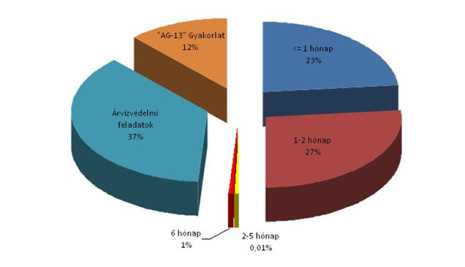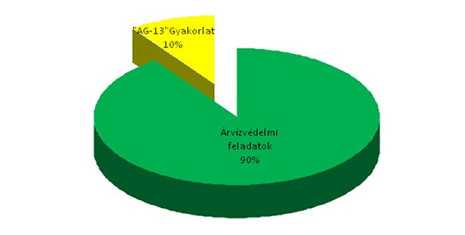Committed community of patriots established
Szöveg: Ádám Draveczki-Ury | 2013. december 27. 9:04On 19th December Minister of Defence Mr Csaba Hende called the establishment of voluntary reserve system as a capability development success story, the greatest military force-development in Hungary since the regime change in Budapest.

Minister of Defence Mr Csaba Hende
On Thursday morning the Defence Minister briefed the press on three years of the voluntary reserve system in the Balaton street building of the MoD. “There are no military forces without reserves", the Defence Minister pointed out. “Military history knows of no army which was able to successfully accomplish its mission without reserves." Therefore an investment into the armed forces reserves is an investment into our security as well through which the capabilities of the Hungarian Defence Forces can be improved in a more efficient and faster way, moreover, without increasing the number of the more costly regular personnel. It is also important that through the voluntary reserve system the HDF will be an open social institution accessible for many people, so it has redefined itself.
Mr Hende emphasised that reservists comprise the only peace-time reserve force of professional armed forces, which has a significant disaster relief aspect too. The Hungarian Defence Forces may be able to fulfil their basic missions only if besides the professional and contracted personnel it can also rely on voluntary reservists who can augment the capabilities of the existing forces. The Minister of Defence called the establishment of the voluntary reserve system a capability-development success story, the greatest military force-development in Hungary since the regime change. “There was no similar increase of force, capability development in the past twenty years," he said and reminded that the groundwork for the existence of the system was done at constitutional level.

Active duty of the voluntary operational reservists
The system consists of voluntary defence reservists and voluntary operational reservists. Defence reservists have been tasked with the protection and defence of barracks since January 1st 2011. They are employed by HM EI Zrt through indefinite duration contracts. Their strength is around 2,000 and, of course, they can be involved in disaster-relief operations. Since it was launched the system has been working at a stable, nearly 100% strength. The development of the voluntary operational reserve forces began on 1st January 2012. This structure mainly involves assignments which are not necessary or not possible to man in peace time continuously but the preparation of their prospective personnel is necessary. By the end of 2013 the HDF made a contract with some 3,000 voluntary operational reservists and the system is open for any Hungarian citizens between 18 years and pension age, with permanent residence in Hungary.
Mr Hende highlighted that 2013 was the year of the development and stabilisation of the system with assigning the reservists to their final positions. Accordingly, for example, the defence vice-president functions in the local defence committees re-established on 1st January are to be manned by voluntary operational reservists. This means, at district level both the HDF and military expertise are present. Of course, all this is also extremely cost-effective. During the summer floods on the Danube River the system was tested in real-life situation too. The flood control tasks were conducted by over 1,400 reservists which was the first large-scale test of the re-established recruitment and reserve system. “Those involved in the flood control gained honour to the reserve system and proved that it is complete and functioning and the reservists comprise a military community committed to their motherland. Thanks to them the capabilities of the HDF grew and the military was capable of much more than before."

The active duty of the voluntary defence reservists
As the Defence Minister said this year a total of 4,851 draft calls were sent to reservists, 929 persons did their training duties, and on the basis of agreements with employers the MoD has over 500 contracted employers. In the future it is a headline goal to improve the cooperation with institutes of higher education: agreements were made with seven universities and colleges about launching defence studies as an optional academic subject. The involvement of young generation has significantly improved in the past few years: in the summer of 2012 a mere 3% of reservists were less than 30 years old. This proportion has been continuously growing and currently it is about 10%. Most of this age group is comprised by students in secondary and tertiary education and this growth has very promising perspectives for the future. In 2013 the 25-day basic military training was done by five times more young people than a year ago. In 2013 the military made it possible for voluntary reservists to deploy in foreign missions. Currently unarmed individual observer positions are available for applications to Mali or Georgia. The first applicant began his service in Africa in August.
Answering a question Mr Hende said, the objective of the MoD is to have the system reach an 8,000-strength level by the end of 2014.
Photos by Gábor Galovtsik